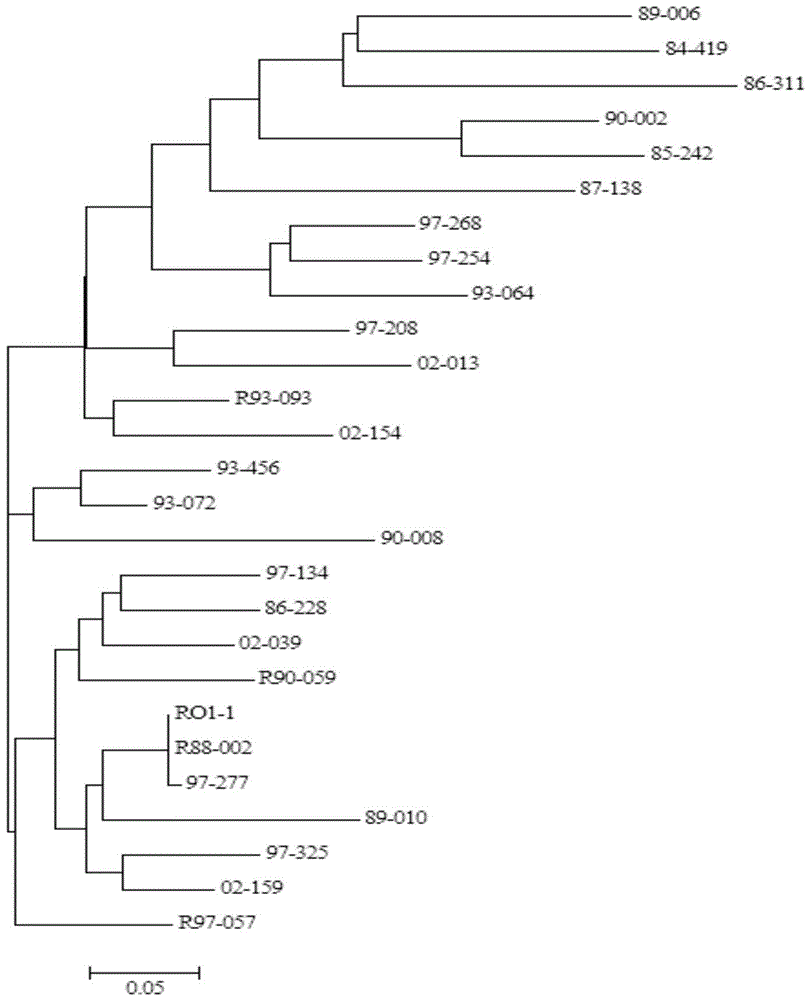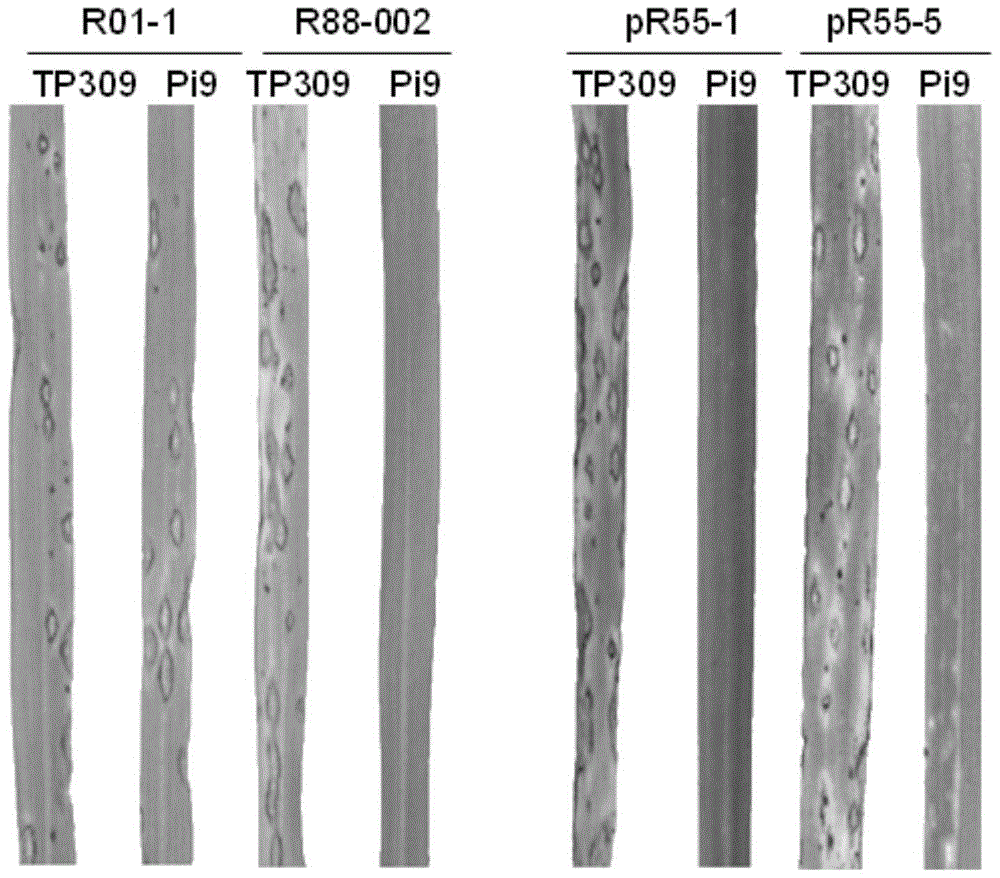A kind of rice blast fungus avirulent gene avrpi9, encoded polypeptide, polynucleotide and application thereof
A technology of avirulent gene, rice blast fungus, applied in the field of genetic engineering, can solve problems such as lag
- Summary
- Abstract
- Description
- Claims
- Application Information
AI Technical Summary
Problems solved by technology
Method used
Image
Examples
Embodiment 1
[0024] Example 1: Determination of wild-type Magnaporthe grisea strain R88-002 carrying the avirulent gene AvrPi9.
[0025] R01-1 is an avrPi9 mutant screened by continuous inoculation of a mixture of 26 AvrPi9 strains (Kim BR, et al., 2004). Therefore, it is very reasonable to speculate that R01-1 should be derived from one of the 26 mixed strains. The present invention identifies the mutant donor strains of R01-1 in 26 mixed bacterial strains by developing 192 R01-1-specific molecular markers (Table 1). The results are shown in Table 2. Compared with R01-1, bacterial strain R88 No polymorphism was observed for -002, whereas the most abundant polymorphism was found in strain 85-242. According to the comparison of the PCR amplification bands and the statistics of the results, a phylogenetic tree was constructed using the Neighbor-joining method (attached figure 1 ), and finally determined that R88-002 was the wild type of the R01-1 strain.
[0026] Table 1 PCR primers used ...
Embodiment 2
[0033] Example 2: Determination and comparison of R88-002 and R01-1 genome sequences.
[0034]The present invention uses Illumina platform sequencing to sequence the genomes of R88-002 and R01-1. In order to achieve the same quality assembled genomes, the present invention performs 100-fold coverage sequencing on them, and the sequencing volume reaches about 4.5Gb. Overall, the assembled genomes of R88-002 and R01-1 were not significantly different from other sequenced M. oryzae genomes in terms of genome size, number of predicted genes, and number of secreted proteins. In order to facilitate comparison and analysis, the present invention also introduces two other AvrPi9 avirulent strains 70-15 and Ina168 with published sequences. R88-002 is an avirulent strain of AvrPi9 and R01-1 is a virulent strain of AvrPi9. Based on the experience of the cloned avirulent gene of Magnaporthe grisea, it is boldly assumed that AvrPi9 encodes a secreted protein, and the mechanism of the loss...
Embodiment 3
[0036] Example 3: Complementation identification of candidate genes.
[0037] The background of the primers and vectors constructed by the candidate gene complementation identification vectors of the present invention are shown in Table 3. Using KOD high-fidelity enzyme, R1434 and R1435 were amplified from R88-002 using 12655CF / 12655CR and 12654CF / 12654CR, respectively, and cloned into the T-easy vector purchased from Quanshijin Company. Then Sac I and Asc I were used to recombine the gene fragments into the pCSN43 vector, which were named pR55 and pR54, respectively. The constructed vectors were introduced into virulent strains R01-1 and 75-5 using PEG protoplast transformation (Sweigard et al. 1995). Among them, R1434 gene in R01-1 has Mg-SINE inserted inside, and R1435 is the same as R88-002, therefore, only pR55 is complemented. However, neither gene exists in 75-5, therefore, the complementation of pR55 and pR54 was performed separately.
[0038] The present invention ...
PUM
 Login to View More
Login to View More Abstract
Description
Claims
Application Information
 Login to View More
Login to View More - R&D
- Intellectual Property
- Life Sciences
- Materials
- Tech Scout
- Unparalleled Data Quality
- Higher Quality Content
- 60% Fewer Hallucinations
Browse by: Latest US Patents, China's latest patents, Technical Efficacy Thesaurus, Application Domain, Technology Topic, Popular Technical Reports.
© 2025 PatSnap. All rights reserved.Legal|Privacy policy|Modern Slavery Act Transparency Statement|Sitemap|About US| Contact US: help@patsnap.com



